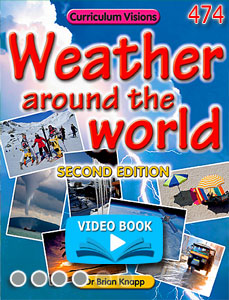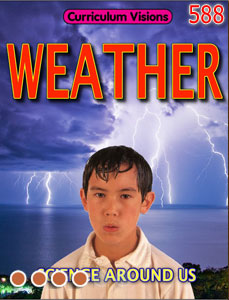Explore these further resources...
(These links take you to other parts of our web site, never to outside locations.)
You can search in these books:







Usually winds do not have a large influence on what we do. Winds are really only important when they become very strong and give gales or worse. The most severe windy conditions happen with tornadoes and hurricanes.
A tornado comes from the Spanish ‘tronada’, or thunderstorm. Tornadoes are tightly spinning, funnel-shaped clouds that appear to hang from the bottom of a thundercloud.
The winds in the centre of the funnel are the fastest in the world, some reaching 800 km/hr. They quickly pass over the ground, but the destruction they can cause in just a few minutes’ passage can be tremendous.
Tornadoes are produced as air is sucked very quickly into the bottom of a thunderstorm. They can form over land or water (where they are called waterspouts).
Tornadoes may be just a few tens of metres across where they touch the ground; the biggest are only some hundreds of metres across. They may last for less than an hour, and may travel just a few tens of kilometres.
Inside a tornado the air is very ‘thin’ (it is an area of very low pressure). Many buildings that have been tightly shuttered for protection often explode as a tornado passes because the air pressure inside the building remains much greater than that on the outside.
Tornadoes are very much smaller than hurricanes. You find tornadoes from the cool lands of the United Kingdom to the warmer areas of Australia, but they are by far most common in the United States, which holds the world record at an average of 1,000 each year, most causing damage between May and July.
Hurricanes are named after the West Indian word ‘hurrican’, meaning big wind. In the Western Pacific they are called typhoons (from the Chinese ‘taifun’, which means great wind).
Hurricane-force winds can uproot trees, demolish houses and leave a trail of death and destruction. Some of these winds may travel at the speed of a bullet – and do far more damage.
Hurricanes are vast, swirling masses of cloud that mainly (but not always) move within and near the tropics. They may travel many thousands of kilometres and they may last for weeks.
Hurricanes form only over hot oceans. Florida and the Caribbean islands are places which experience a hurricane season from late August to November. This is definitely not the most popular time to visit these places on holiday!
The hot ocean waters of late summer send heat and enormous amounts of moisture directly to the air. The hot, moist air then rises quickly. Then the moisture starts to turn back into water droplets, producing huge walls of cloud, releasing torrential rain and giving out vast amounts of heat energy. The heat fuels the rising air.
The air soon begins to spin around a calm, often clear and sunny centre, called the eye.
Think of a hurricane as a spinning top. The top spins furiously and wobbles in a curving path. The winds inside the hurricane may be going at over 117 km/hr. The hurricane itself, however, drifts from one place to another at a leisurely 12 km/hr.
Because a hurricane may be over 800 km across, the winds from a hurricane can batter an area for two days, with the most severe and damaging winds lasting for about 12 hours.





